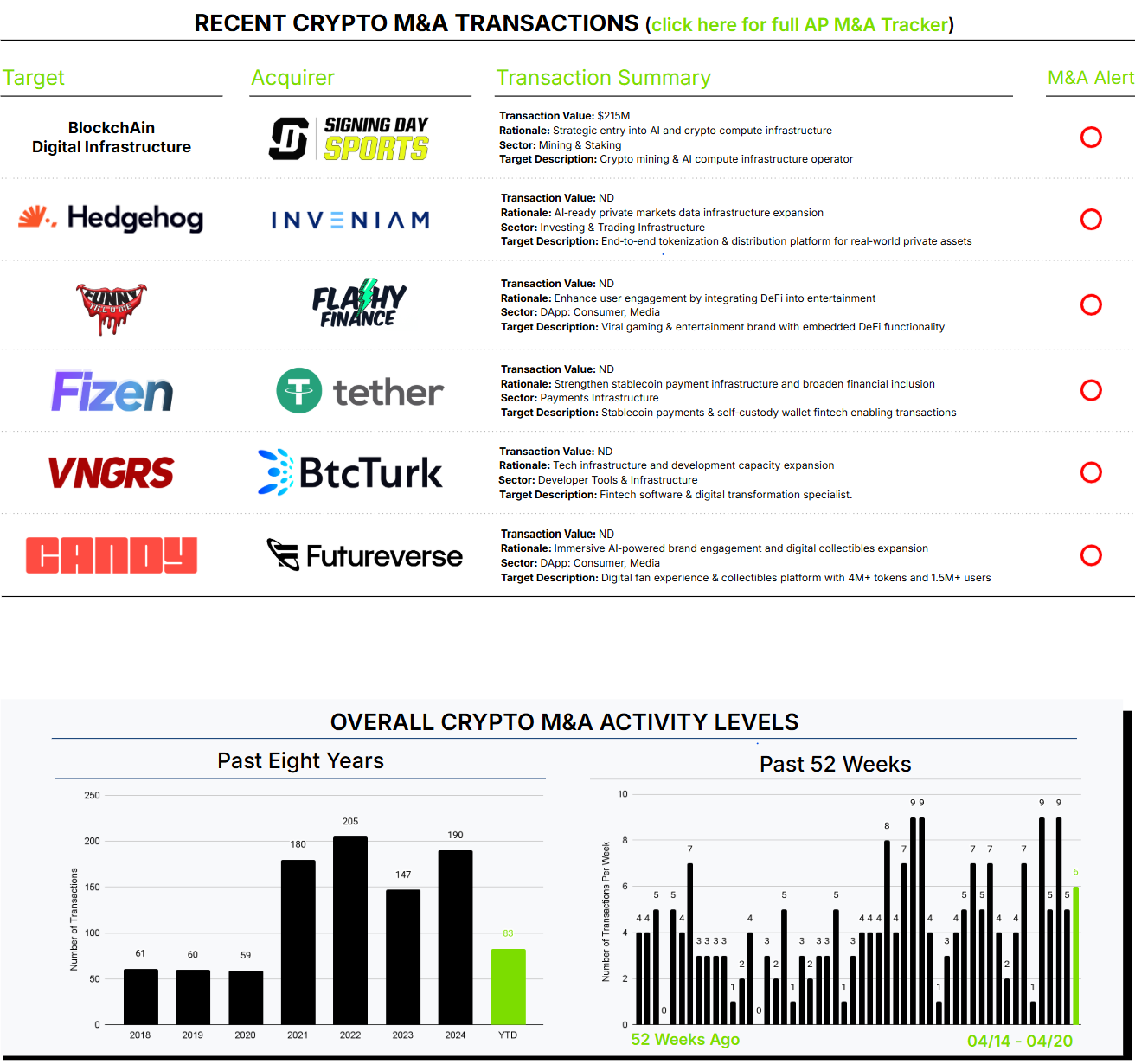April 14th – April 20th
PERSPECTIVES by Eric F. Risley
At this moment in history, the crypto industry faces a profound mismatch between the user interface and any use case that extends beyond buy, sell, hold. This is particularly stark with the much‑talked‑about payments use case.
We all know crypto’s originating thesis was, “A purely peer‑to‑peer version of electronic cash would allow online payments to be sent directly from one party to another without going through a financial institution.” That hasn’t come to pass, at least at scale. Why? We posit it’s simple: Bitcoin (and other crypto assets generally) have become, both in perception and reality, an investment, not a currency. Investments are not spent—at least willingly. The entire crypto industry, over 16.5 years, has been built to support investing, not payments.
In a rather ironic twist of fate, the introduction and wide use of stablecoins—particularly U.S.‑dollar‑backed stablecoins—has created the crypto equivalent of a fiat currency. The stablecoin’s initial use case was as a safe, price‑stable, “fiat‑equivalent” asset to hold before or after being deployed in various crypto investments. Let’s call this an “investment use case.” One could call these “payments,” but most define a payment as paying for an everyday good or service.
Today, stablecoins are certainly being used for everyday payments, albeit this remains a small fraction of overall stablecoin use. Another irony: given the ability to perfectly track all crypto transactions, including stablecoins, there is currently no way to definitively know whether a stablecoin is being used for an investment use case or as payment for everyday goods and services.
As usual with crypto—and, to be fair, many innovative technologies—the narrative runs ahead of reality. “Stablecoin payments are the next new major use case for crypto assets.” While accurate, scaling this use case to everyday people faces challenging hurdles. The most obvious is what we’ll call a lack of a widely adopted user interface.
What has become well‑developed are three critical base‑level infrastructure components. First is the source of transaction tracking—blockchains of various forms. Second is the payment asset—a stablecoin. Third is the ability to move from fiat to crypto and back again. These allow for the potential. What’s missing today, at least in widely adopted form, is a “place” where the payment transaction is initiated and received. This is what we call the application layer and, fundamentally, is the user interface where payments start and end. This is the equivalent of PayPal, Venmo, M‑Pesa, WeChat, your bank’s mobile app, your Visa card, your Apple Wallet. Billions use these daily.
The strategic challenge is: how does a stablecoin‑based application catch fire and scale? Can that practically occur, or are the incumbents in a far more powerful strategic position because they already have the user relationship? Can’t any of the incumbents simply add stablecoin‑based payments as an alternative and win?
This is what gets us at Architect Partners excited—helping our clients think through, and assisting with executing against, these types of strategic questions.
